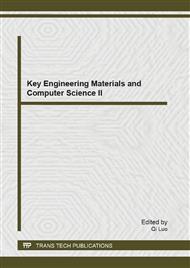[1]
Information on http://baike.baidu.com/view/510810.htm
Google Scholar
[2]
Mengbo: An Undergoing Information Dissemination Reform, Information on http://blog.sina.com.cn/s/blog_4734304f0100h1yd.html
Google Scholar
[3]
Cynthia Chew, Gunther Eysenbach. Pandemics in the Age of Twitter-Content Analysis of Tweets during the 2009H1N1 outbreak[J]. PLOS ONE, Vol. 11(2010)pp.1-13
DOI: 10.1371/journal.pone.0014118
Google Scholar
[4]
IlijaSubasic, Bettina Berendt. Peddling or Creating? Investigating the Role of Twitter in News Reporting, K.U. Leuven, Belgium(2011)
Google Scholar
[5]
Daley D J, Kendall D G .Epidemics and rumours[J], Nature,vol.204(1965),p.1118
Google Scholar
[6]
Zhangfang,Simaya,Luopi,A Review on Rumor Propagation Model[J], Complex System and Complexity Science, Vol.6(2009), pp.1-10.
Google Scholar
[7]
Wangjunfeng. Study on Phase-Transition Characteristics in Potts Model of Rumor Propagation [D]. Wuhan: Huazhong University of Science and Technology (2004), pp.9-20.
Google Scholar
[8]
Wangjunfeng, Tanxiaojun. Canonical and Micro-canonical Phase Transition in Potts Model of Rumor Propagation[J], Journal of Hubei University (Natural Science Edition), Vol.26(2004), pp.303-306.
Google Scholar
[9]
Zanette D H. Criticality of rumor propagation on small-world networks(2009), Information on http: / /arxiv. org /PS _cache /cond-mat /pdf /0109 /0109049v1. pdf.
Google Scholar
[10]
Moreno Y, Nekovee M, Pacheco A F. Dynamics of rumor spreading in complex networks[J], Phys. Rev. E,Vol 69 (2004).
DOI: 10.1103/physreve.69.066130
Google Scholar
[11]
IshamV, Harden S, Nekovee M, Stochastic epidemics and rumors on finite random networks[J], physica A ,Vol.389(2010), pp.561-576.
DOI: 10.1016/j.physa.2009.10.001
Google Scholar
[12]
Liuchangxing,Huxiaofeng,Siguangya, Research on the Consensus Emergency Model, from Complex System and Complexity Science,Vol.4(2007), pp.22-27.
Google Scholar
[13]
Wangchangchun,Chenchao,Research on the Consensus Emergency Model, from Complex System and Complexity Science,Vol.32(2012), pp.203-210.
Google Scholar
[14]
Panxin, Dengguishi, Tongbin, Research on the Consensus Emergency Model, from Complex System and Complexity Science,Vol.20(2011), pp.176-179.
Google Scholar
[15]
Wu F, Huberman B A. Social structure and opinion formation, HP Labs Palo Alto, CA 94304 (2008), information on http://arxiv.org/pdf/cond-mat/0407252v3.pdf
Google Scholar


